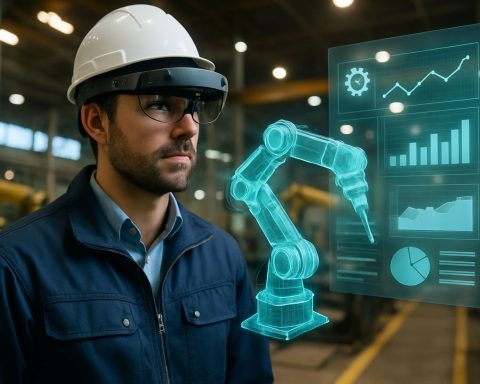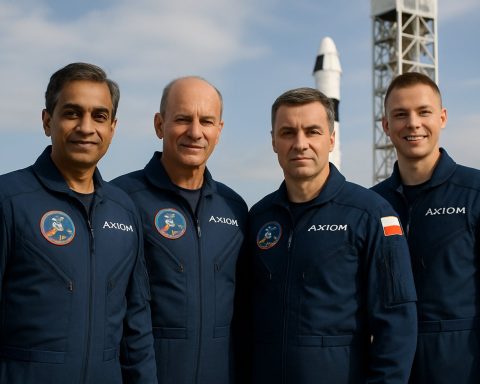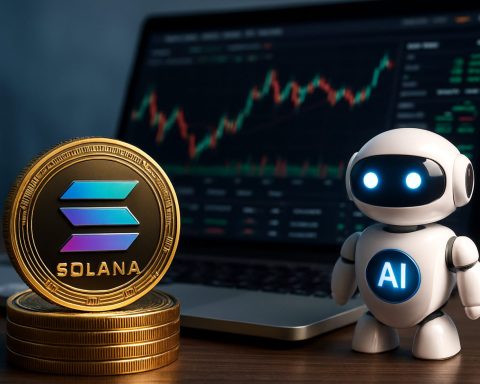In a surprising turn of events, a Chinese AI startup has disrupted the AI landscape. On Monday, shares of a well-known quantum company plummeted after DeepSeek unveiled its groundbreaking reasoning system, R1. This new technology has reportedly outperformed the latest offering from Microsoft-backed OpenAI in various third-party evaluations.
The introduction of DeepSeek’s R1 has ignited discussions concerning the dominance of American companies in the artificial intelligence sphere. Many experts are now questioning the long-held belief that American firms hold the upper hand in AI innovation. The impressive performance of R1 suggests that AI development is becoming increasingly competitive on a global scale.
R1’s capabilities showcase significant advancements in reasoning processes, setting a high benchmark for AI systems. As companies like OpenAI continue to push the envelope in AI research, the emergence of formidable competitors like DeepSeek indicates an evolving landscape where innovation knows no geographic boundaries.
This development signals a shift in the competitive dynamics of the AI industry, with potential implications for future technological leadership. Investors and tech enthusiasts alike are keenly watching how these advancements shape the future of artificial intelligence, as more players enter this rapidly expanding field. The race for AI supremacy is heating up, and it remains to be seen how established giants will respond to these new challenges.
Global Shifts in AI Dominance
The emergence of DeepSeek’s R1 highlights a significant shift in the global landscape of artificial intelligence. As AI technology continues to advance at a rapid pace, the competitive landscape is becoming more diverse and globalized. This development portends a future where innovation is not solely the province of established American companies but can arise from unexpected corners of the globe.
This shift will not only shape the technology sector but also impact society at large. Countries that successfully innovate in AI could experience substantial economic growth, creating new jobs and industries in an increasingly AI-driven world. The rise of global competition in AI may foster a more collaborative spirit among nations as they strive to lead in technology, potentially resulting in shared knowledge and technological breakthroughs.
However, this competitive landscape may also lead to heightened geopolitical tensions. As nations vie for technological superiority, issues surrounding data privacy, cybersecurity, and ethical AI use will come to the forefront. The significant role of AI in military applications raises questions about an arms race in artificial intelligence, necessitating international dialogue and cooperation to prevent missteps.
In terms of environmental effects, the demand for powerful AI systems necessitates vast energy resources. The pursuit of AI excellence must also consider sustainable practices. Moving forward, the industry faces the responsibility of minimizing its environmental footprint while pushing the boundaries of innovation, making the trajectory of AI development a matter of global significance.
The Rise of DeepSeek’s R1: A Game Changer in the AI Landscape
Overview of DeepSeek and Its Innovations
The artificial intelligence (AI) landscape has been significantly shaken by the entry of DeepSeek, a Chinese AI startup noted for its groundbreaking AI reasoning system, R1. The unveiling of R1 has generated considerable attention, especially after it reportedly outperformed offerings from established companies such as OpenAI, which is backed by Microsoft. This event marks a pivotal moment in the global AI race and raises critical questions about the balance of power between East and West in the tech arena.
Features and Capabilities of R1
DeepSeek’s R1 boasts advanced reasoning processes that streamline complex data analysis and decision-making tasks. Some key features of R1 include:
– Enhanced Reasoning Abilities: R1 uses sophisticated algorithms to analyze and reason through large datasets, resulting in high accuracy and speed.
– Versatility: This AI system can be applied across various industries, including healthcare, finance, and logistics, providing tailored solutions to diverse problems.
– User-Friendly Interface: Despite its complexities, R1 is designed to be accessible to users without extensive technical backgrounds, facilitating broader adoption.
Pros and Cons of R1
Pros:
– Top Performance: Early evaluations suggest R1 outperforms many existing AI systems in accuracy and processing speed.
– Innovation in AI: The emergence of DeepSeek encourages further innovation, prompting other tech companies to enhance their products.
– Global Competition: R1’s success indicates the growing competition in AI, challenging the notion that American companies dominate this sector.
Cons:
– Limited Track Record: As a new entrant, R1 may face challenges in proving its reliability and scalability in real-world applications.
– Geopolitical Implications: The rise of non-Western AI firms could heighten tensions between global tech powers and lead to regulatory scrutiny.
Market Analysis and Future Trends
The introduction of R1 highlights a significant trend in which AI development is becoming increasingly competitive, with no single country holding an unequivocal advantage. As technology advances, it is likely that other startups will emerge, further diversifying the AI landscape.
Investors are now closely monitoring this shift, as the potential for innovation comes with increased competition, which could drive prices down and improve overall technology quality across the board.
Security and Sustainability Considerations
With the rapid advancement of AI technologies like R1, there are essential security and sustainability implications that need addressing:
– Data Security: As AI systems gain prominence, ensuring the security of sensitive data will become imperative to prevent breaches and misuse.
– Sustainable AI Practices: The development of efficient AI solutions can contribute to sustainability by minimizing resource consumption and optimizing processes in various sectors.
Conclusion: The Future of AI with DeepSeek’s R1
DeepSeek’s portrayal of R1 signifies a significant shift in the competitive dynamics of the AI industry. As the global race for AI supremacy heats up, the impact of DeepSeek’s innovations will likely be felt across the technology landscape. Tech enthusiasts and investors will be eager to see how established giants respond to this new competition and how it shapes the future of artificial intelligence.
For more information about the evolving AI landscape, visit DeepSeek.











